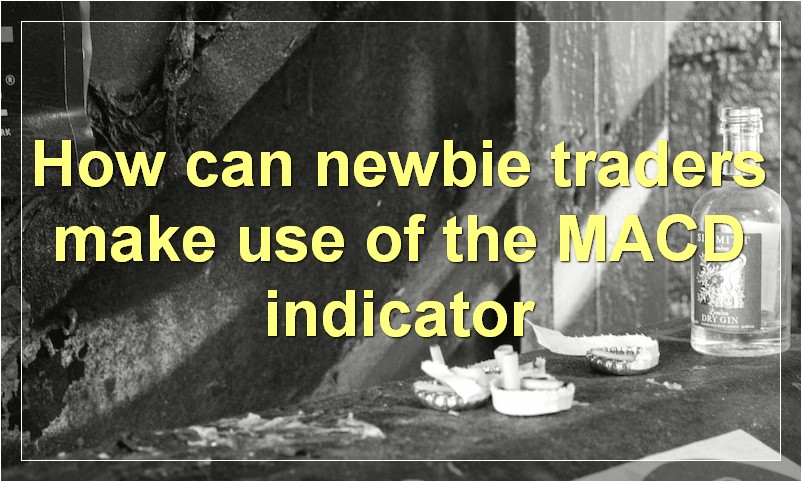The MACD indicator is one of the most popular indicators used by traders. It can be used for trend changes, entry/exit, and more.
How is the MACD used to signal changes in the market trend

The MACD is a technical indicator that is used to signal changes in the market trend. The MACD is calculated by subtracting the 26-day exponential moving average (EMA) from the 12-day EMA. The resulting line is then plotted on a graph with a horizontal line called the signal line. A buy signal is generated when the MACD line crosses above the signal line and a sell signal is generated when the MACD line crosses below the signal line.
The MACD is a popular technical indicator because it is simple to understand and can be used to identify both long-term and short-term trends. The MACD is also effective in identifying trend reversals.
How does the MACD histogram help traders spot trend changes
The MACD histogram is a tool that traders use to spot changes in trends. The histogram measures the difference between the MACD line and the signal line. When the MACD line crosses above the signal line, it signals that the trend is changing from bearish to bullish. Conversely, when the MACD line crosses below the signal line, it signals that the trend is changing from bullish to bearish. The MACD histogram can help traders spot these trend changes before they happen, which can give them a leg up on the competition.
How do traders use MACD divergences to enter and exit trades
The MACD divergence is used by traders to identify potential changes in the direction of an asset’s price. A divergence occurs when the MACD line diverges from the price action on the chart. This can be used as a signal to enter or exit a trade.
There are two types of MACD divergences: bullish and bearish.
A bullish divergence occurs when the MACD line diverges upwards from the price action on the chart. This is seen as a potential sign that the price of the asset may reverse and start to move upwards.
A bearish divergence occurs when the MACD line diverges downwards from the price action on the chart. This is seen as a potential sign that the price of the asset may reverse and start to move downwards.
What are the benefits and limitations of using the MACD indicator
The MACD indicator is a technical analysis tool that is used to measure the momentum of a security. The indicator is calculated by subtracting the 26-day exponential moving average (EMA) from the 12-day EMA. The resulting line is then plotted on a chart along with a signal line that is created by taking the 9-day EMA of the MACD line. A buy signal is generated when the MACD line crosses above the signal line and a sell signal is generated when the MACD line crosses below the signal line.
The MACD indicator can be used to identify trends, momentum, and overbought/oversold conditions. The indicator is also useful in determining whether a security is undergoing a period of consolidation or is about to break out to the upside or downside.
The benefits of using the MACD indicator include its ability to quickly and easily identify trends, momentum, and overbought/oversold conditions. The limitations of using the MACD indicator include its reliance on past data and its inability to predict future price movements.
How can newbie traders make use of the MACD indicator

If you’re a newbie trader, then you might be wondering how you can make use of the MACD indicator. Here’s a quick guide on how you can use this indicator to your advantage.
The MACD indicator is a momentum indicator that measures the difference between two moving averages. It’s typically used to identify trend reversals and can be a valuable tool in your trading arsenal.
Here’s how you can use the MACD indicator to your advantage:
1. Look for divergences: A divergence occurs when the MACD line diverges from the price action. This is an early indication that a trend reversal may be imminent.
2. Use the MACD histogram: The MACD histogram is a helpful tool that visually displays the momentum of the market. Look for peaks and troughs in the histogram to identify potential reversals.
3. Take advantage of crossovers: Crossovers occur when the MACD line crosses over the signal line. These can be used as trade signals, with bullish crossovers indicating a buy signal and bearish crossovers indicating a sell signal.
By following these simple tips, you can start using the MACD indicator to your advantage and improve your trading results.
What are some common mistakes traders make with the MACD indicator
There are a few common mistakes that traders make when using the MACD indicator. One mistake is not accounting for the MACD line’s lag. The MACD line lags behind the price action because it is based on moving averages. This means that the MACD line will not turn until after the price has already started to move in the new direction. This can lead to traders entering into trades too late and missing out on potential profits. Another mistake is not using the MACD histogram. The MACD histogram is a valuable tool that can help traders gauge the strength of the current trend. Finally, some traders do not use stop-losses when trading with the MACD indicator. This is a risky move as the MACD line can reverse direction quickly, leading to big losses if a stop-loss is not placed.
How can traders combine other indicators with the MACD for better results
The MACD is a technical indicator that measures the difference between two moving averages. It is a popular indicator among traders, but it can be tricky to interpret.
One way to make the MACD more effective is to combine it with other indicators. For example, the MACD can be used with support and resistance levels to find trade entry and exit points.
Another way to use the MACD is in conjunction with candlestick patterns. This can help you identify trend reversals and confirm price movements.
The MACD is a powerful tool, but it works best when used in combination with other indicators. By using the MACD along with other technical analysis tools, you can improve your trading results.
What are some advanced strategies for trading with the MACD indicator
There are many different ways to trade with the MACD indicator, and it can be used in a variety of different ways. Some advanced strategies for trading with the MACD indicator include using it as a trend following tool, as a momentum indicator, and as a way to identify potential reversals.
The MACD indicator can be used as a trend following tool by looking for divergences between the price and the indicator. A bullish divergence occurs when the MACD line is making higher highs while the price is making lower lows. This is an indication that the price is about to start moving higher. A bearish divergence occurs when the MACD line is making lower lows while the price is making higher highs. This is an indication that the price is about to start moving lower.
The MACD indicator can also be used as a momentum indicator. A bullish momentum setup occurs when the MACD line is above the signal line and the histogram is positive. This is an indication that the market is currently in an uptrend and that momentum is increasing. A bearish momentum setup occurs when the MACD line is below the signal line and the histogram is negative. This is an indication that the market is currently in a downtrend and that momentum is decreasing.
Finally, the MACD indicator can be used as a way to identify potential reversals. A bullish reversal occurs when the MACD line crosses above the signal line. This indicates that the market may be about to start going up. A bearish reversal occurs when the MACD line crosses below the signal line. This indicates that the market may be about to start going down.
How can traders avoid getting faked out by false MACD signals
False MACD signals can occur when the 12-day EMA and 26-day EMA of prices diverge, but this is not always indicative of a price reversal. To avoid being faked out by false MACD signals, traders can look for other confirming indicators such as trendline breaks, RSI divergences, or price action.

